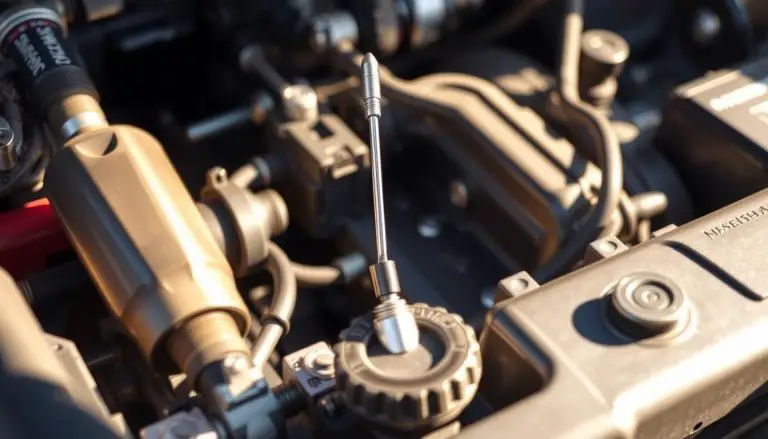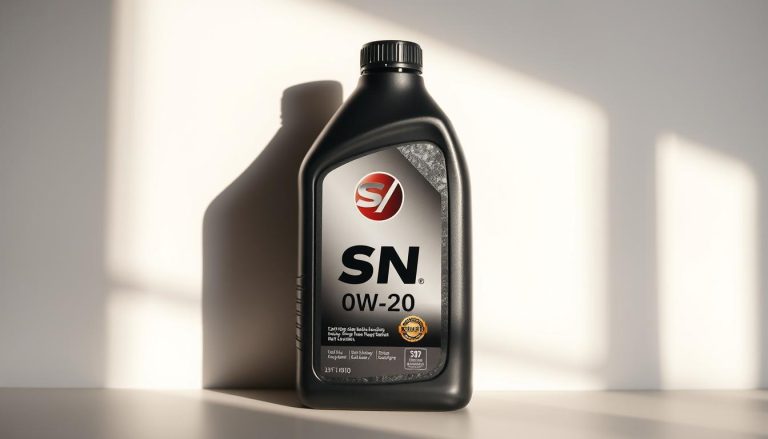Maintaining the correct transmission fluid level in your Nissan Murano is crucial for ensuring smooth operation and longevity of your vehicle’s CVT system. Whether you’re performing routine maintenance or addressing a specific issue, knowing the exact transmission oil capacity for your model year is essential.
This comprehensive guide provides detailed information on Nissan Murano transmission fluid capacities across all generations, along with step-by-step instructions for checking and changing your transmission fluid. We’ll also cover maintenance schedules, warning signs of low fluid, and recommended products to keep your Murano’s transmission running smoothly for years to come.
Nissan Murano Transmission Oil Capacity Chart
The table below provides the transmission fluid capacity for all Nissan Murano models from 2003 to 2024. Note that these values represent the total system capacity (dry fill). A typical drain and refill service will require approximately 4-6 quarts, depending on your specific model and service method.
| Model Year | Engine Type | Transmission Type | Fluid Capacity (Quarts) | Fluid Capacity (Liters) |
| 2003-2007 (1st Gen) | 3.5L V6 | CVT (RE0F09B) | 10.1 | 9.5 |
| 2009-2014 (2nd Gen) | 3.5L V6 | CVT (RE0F10A) | 10.9 | 10.3 |
| 2015-2020 (3rd Gen) | 3.5L V6 | CVT (RE0F10D) | 10.9 | 10.3 |
| 2021-2024 (3rd Gen Refresh) | 3.5L V6 | CVT (RE0F10E) | 10.9 | 10.3 |
Note: Capacities may vary slightly between FWD and AWD models. A standard drain and refill service typically requires 4-6 quarts of fluid, as not all fluid can be drained during routine maintenance.
Why Transmission Fluid Capacity Matters
Maintaining the correct transmission fluid level is critical for several reasons:
Performance Impact
- Proper lubrication of moving parts
- Optimal hydraulic pressure for smooth shifting
- Heat dissipation to prevent overheating
- Friction control for CVT belt/chain operation
Potential Issues from Incorrect Levels
- Too little fluid: Increased friction, overheating, premature wear
- Too much fluid: Foaming, pressure problems, fluid leakage
- Degraded fluid: Reduced lubrication, sludge buildup, poor shifting
The Nissan Murano uses a Continuously Variable Transmission (CVT) system, which is particularly sensitive to fluid condition and level. Unlike traditional automatic transmissions, CVTs use a belt or chain running on pulleys instead of fixed gears, making proper lubrication even more critical for longevity.
Recommended Transmission Fluids for Nissan Murano
Using the correct transmission fluid is essential for your Murano’s CVT performance and longevity. Nissan has specific fluid requirements based on model year:
Nissan Genuine NS-3 CVT Fluid
For 2013 and newer Murano models
- Specifically engineered for newer Nissan CVTs
- Enhanced friction modifiers for improved belt/pulley contact
- Superior thermal stability for heat protection
- Optimized for longer service intervals
Nissan Genuine NS-2 CVT Fluid
For 2003-2012 Murano models
- Formulated for earlier Nissan CVT systems
- Provides optimal metal-to-metal friction protection
- Prevents belt slippage in older CVT designs
- Available in convenient 1-quart bottles
How to Check Transmission Fluid in a Nissan Murano
The procedure for checking transmission fluid varies by Murano generation:
For 2003-2014 Models (With Dipstick)
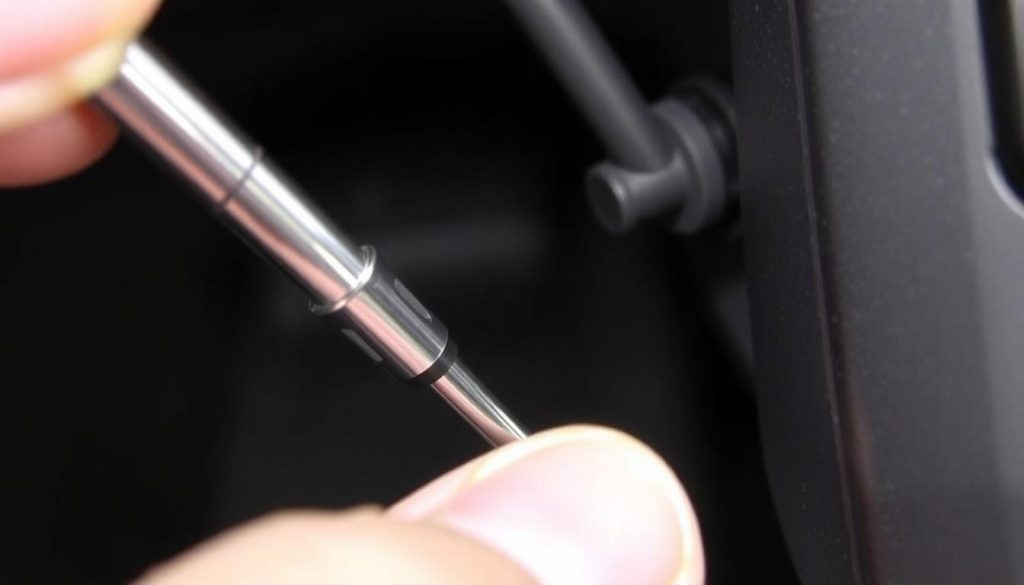
- Park on a level surface and start the engine.
- With foot on brake, cycle through all gear positions, ending in Park.
- Let the engine idle until it reaches normal operating temperature.
- Locate the transmission dipstick (typically has a ring-shaped handle).
- Remove dipstick, wipe clean with lint-free cloth.
- Reinsert fully, then remove again to check level.
- Fluid should be between MIN and MAX marks when warm.
- Check fluid color – should be clear red, not brown or black.
For 2015-2024 Models (No Dipstick)
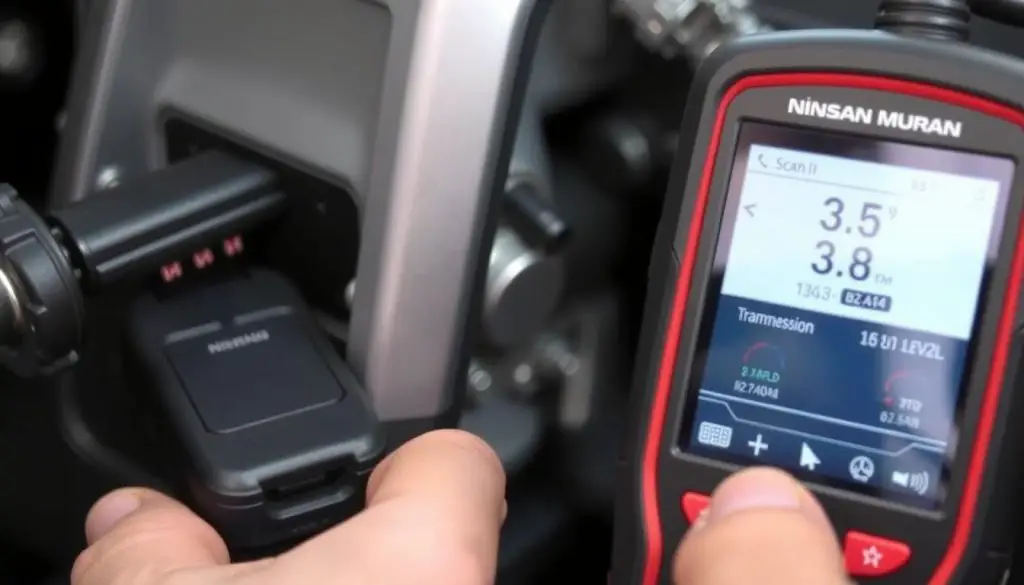
Newer Murano models don’t have a traditional dipstick. Instead, they use a sealed system that requires special procedures:
- Fluid level can only be accurately checked using Nissan’s CONSULT diagnostic system or equivalent professional scan tool
- The procedure requires monitoring transmission fluid temperature (must be 104°F-113°F)
- Access is through a level plug on the transmission case
- For these models, it’s recommended to have the level checked by a qualified technician
Pro Tip: Always check your transmission fluid when the engine is warm but not hot. Cold readings will be inaccurate, while an overheated transmission can give false readings and pose safety risks.
How to Change Transmission Fluid in a Nissan Murano
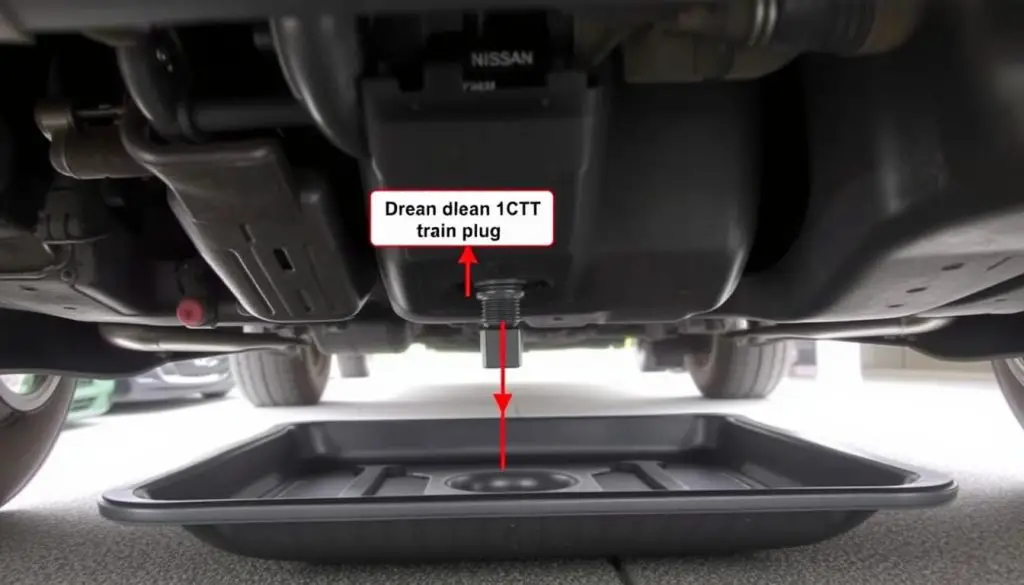
Safety First: Always ensure the vehicle is safely supported on jack stands if you need to access the underside. Never rely solely on a jack. Allow the transmission to cool before beginning work to prevent burns.
Basic Drain and Refill Procedure
- Warm up the transmission by driving for 10-15 minutes.
- Park on a level surface, engage parking brake, and turn off engine.
- Place a drain pan (minimum 5-quart capacity) under the transmission drain plug.
- Remove the drain plug and allow fluid to drain completely (approximately 4-5 quarts will drain).
- Clean the drain plug and replace the crush washer if necessary.
- Reinstall and tighten the drain plug to specification (29-36 ft-lbs).
- Add new fluid through the dipstick tube (2003-2014) or fill plug (2015+).
- Start with 4 quarts, then check the level following the procedure above.
- Add fluid in small increments until the proper level is reached.
- Run the engine, cycle through all gears, then recheck the level.
Transmission Maintenance Schedule
Following Nissan’s recommended maintenance intervals will help maximize the lifespan of your Murano’s CVT transmission:
| Service | Normal Driving Conditions | Severe Driving Conditions* |
| Check Fluid Level | Every 30,000 miles | Every 15,000 miles |
| Change Fluid | Every 60,000 miles | Every 30,000 miles |
| Inspect for Leaks | Every 15,000 miles | Every 7,500 miles |
*Severe conditions include: frequent towing, driving in extremely hot (over 90°F) or cold (below 10°F) temperatures, frequent stop-and-go traffic, or mountainous terrain.
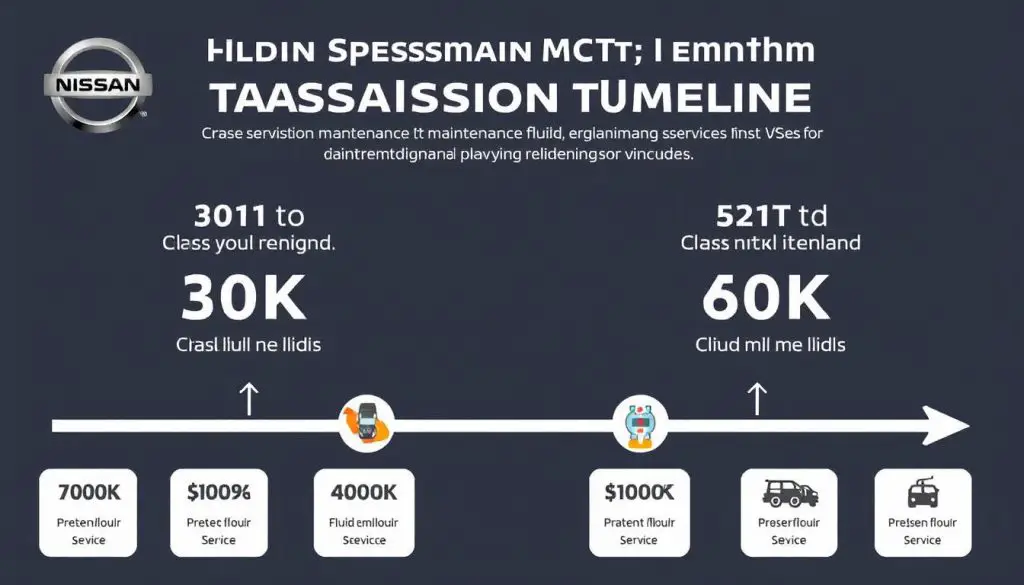
Signs of Low or Degraded Transmission Fluid

Watch for these symptoms that may indicate your Murano needs transmission fluid service:
- Delayed engagement when shifting from Park to Drive or Reverse
- Shuddering or vibration during acceleration, especially at low speeds
- Whining, buzzing, or grinding noises from the transmission
- Burning smell coming from under the hood
- Transmission overheating warning on dashboard
- Slipping sensation where engine RPMs increase without corresponding acceleration
- Difficulty maintaining highway speeds or unexpected downshifting
Warning: If you notice any of these symptoms, check your transmission fluid level and condition immediately. Continuing to drive with low or degraded fluid can lead to costly transmission damage.
Frequently Asked Questions
Can I use aftermarket transmission fluid in my Nissan Murano?
While there are aftermarket fluids marketed as compatible with Nissan CVTs, using non-Nissan fluids may void your warranty and potentially cause transmission issues. Nissan CVTs are specifically engineered to work with their proprietary NS-2 or NS-3 fluids. The unique friction characteristics and additives in these fluids are designed for the specific operating parameters of Nissan CVTs. For optimal performance and reliability, we strongly recommend using only genuine Nissan CVT fluid for your Murano.
How often should I change the transmission fluid in my Murano?
Nissan recommends changing the CVT fluid every 60,000 miles under normal driving conditions, and every 30,000 miles under severe conditions (frequent towing, extreme temperatures, mountain driving, etc.). However, many CVT specialists suggest more frequent changes—every 30,000 miles for normal conditions—to maximize transmission longevity, especially for models with known CVT reliability concerns.
Why won’t my dealership change my high-mileage Murano’s transmission fluid?
Some dealerships may decline to perform a transmission fluid change on high-mileage vehicles (typically over 100,000 miles) if the fluid has never been changed before. This is because changing fluid that has degraded over many miles can sometimes dislodge accumulated debris, potentially causing transmission issues. If you’re in this situation, consider consulting with a transmission specialist who can evaluate your specific case and may offer alternative services like a gentle partial fluid exchange.
Is a transmission flush better than a simple drain and refill?
A transmission flush replaces nearly all the fluid in the system, while a drain and refill typically only replaces 40-50% of the fluid. For regular maintenance on a well-maintained Murano, a simple drain and refill is usually sufficient and less invasive. However, if you’re dealing with fluid that’s significantly degraded or contaminated, a professional flush might be beneficial. Consult with a qualified technician to determine the best approach for your specific situation.
What’s the difference between NS-2 and NS-3 CVT fluid?
NS-3 is Nissan’s newer generation CVT fluid introduced around 2013. It features improved thermal stability and friction characteristics compared to NS-2. While NS-3 is backward compatible (can be used in vehicles that originally specified NS-2), the reverse is not true—never use NS-2 in a vehicle that requires NS-3. Always check your owner’s manual or with a Nissan dealer to confirm the correct fluid specification for your specific model year.
Pro Tips for Extending Your Murano’s Transmission Life
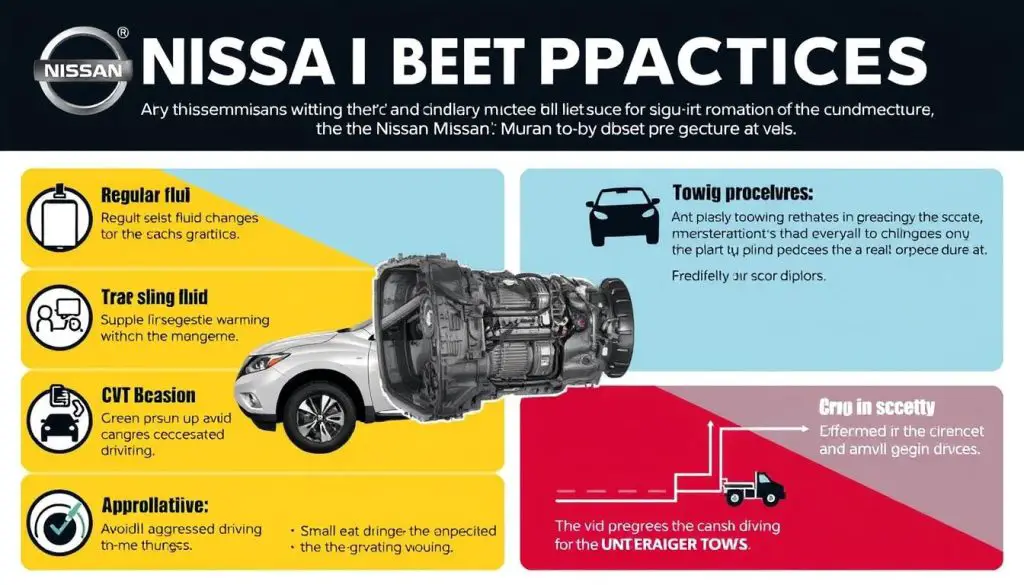
Driving Habits
- Allow your transmission to warm up before driving aggressively, especially in cold weather
- Avoid rapid acceleration and abrupt stops when possible
- Come to a complete stop before shifting between Drive and Reverse
- Don’t exceed your vehicle’s towing capacity (3,500 lbs for most Murano models)
Maintenance Practices
- Keep records of all transmission services
- Use only the specified Nissan CVT fluid for your model year
- Address any transmission-related warning lights immediately
- Consider installing an auxiliary transmission cooler if you frequently tow or drive in hot climates
Essential Transmission Maintenance Tools
For DIY maintenance, having the right tools makes the job easier and safer.
Conclusion
Proper maintenance of your Nissan Murano’s transmission fluid is one of the most important factors in ensuring the longevity and reliability of your vehicle’s CVT system. By following the capacity guidelines, maintenance schedules, and service procedures outlined in this guide, you can help prevent costly transmission issues and keep your Murano running smoothly for years to come.
Remember that while many fluid changes can be performed by experienced DIY mechanics, there’s no substitute for professional service when dealing with complex CVT systems, especially in newer models. When in doubt, consult with a qualified Nissan technician who has the proper tools and expertise to maintain your vehicle’s transmission properly.



